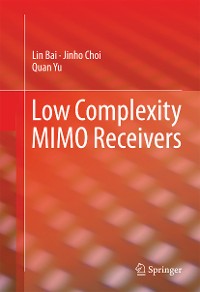Low Complexity MIMO Receivers
Lin Bai, Quan Yu, Jinho Choi, et al.
Springer International Publishing 
Naturwissenschaften, Medizin, Informatik, Technik / Elektronik, Elektrotechnik, Nachrichtentechnik
Beschreibung
Multiple-input multiple-output (MIMO) systems can increase the spectral efficiency in wireless communications. However, the interference becomes the major drawback that leads to high computational complexity at both transmitter and receiver. In particular, the complexity of MIMO receivers can be prohibitively high. As an efficient mathematical tool to devise low complexity approaches that mitigate the interference in MIMO systems, lattice reduction (LR) has been widely studied and employed over the last decade. The co-authors of this book are world's leading experts on MIMO receivers, and here they share the key findings of their research over years. They detail a range of key techniques for receiver design as multiple transmitted and received signals are available. The authors first introduce the principle of signal detection and the LR in mathematical aspects. They then move on to discuss the use of LR in low complexity MIMO receiver design with respect to different aspects, including uncoded MIMO detection, MIMO iterative receivers, receivers in multiuser scenarios, and multicell MIMO systems.
Kundenbewertungen
Interference Alignment, MIMO Detection, Orthogonal Frequency Division Multiple Access (OFDMA), Multiple-Input Multiple-Output (MIMO), Iterative Receiver, Lattice Reduction, Multiuser MIMO systems, Underdetermined MIMO, Successive Interference Cancellation (SIC), Coordinated Multipoint (CoMP)

































